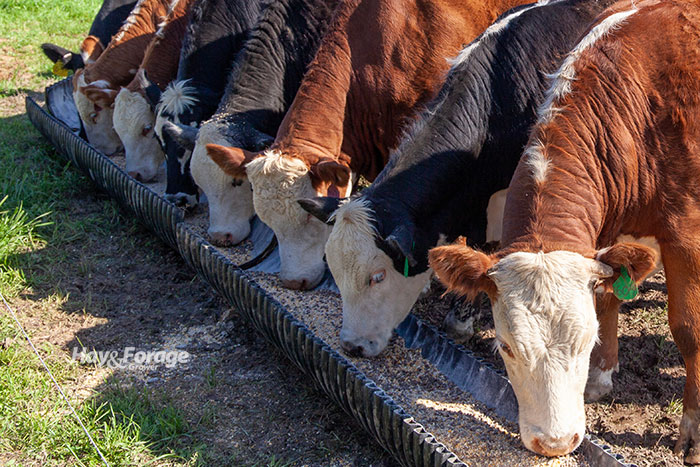
It is rarely ideal for grazing livestock to lose body condition — especially not in the midst of winter breeding season. Weight loss is often a result of low energy levels in cattle rations, but it can be rectified with supplemental feed.
Garth Ruff, beef cattle field specialist with Ohio State University Extension, explains how livestock allocate energy to physiological functions according to a hierarchy. Maintenance comes first and demands the most energy; it is followed in order by development, growth, lactation, reproduction, and fattening.
“Therefore, an animal that is not maintaining body condition is less likely to reproduce,” Ruff states. “That first-calf heifer that is thin at weaning still has a requirement for growth and development before we ever think about getting her to a point where she will breed back in a timely fashion.”
There are different methods of supplementation, such as feeding more forage, purchasing protein tubs, and allocating additional gain. All of these options can elevate energy in rations, but each one is better suited for specific situations.
More forage. The success of this strategy ultimately depends on forage quality and the class of livestock being fed. Ruff suggests high-quality hay from second or third cutting could satisfy energy demands of more mature cows, but it might not be sufficient for first-calf heifers that would benefit from a boost in body condition score.
If buying hay, request forage tests to ensure energy levels will be high enough for your herd. Also, consider dry matter losses compared to the price of the product to prevent overpaying for energy that ends up being wasted.
Protein tubs. “Too often in these instances I’ve seen tubs relied on as a cure-all,” Ruff notes. “Tubs may have a place in stocker situations, providing weaned calves with some protein, but considering the cost and energy levels, they are likely not to be cost effective in providing supplemental energy to grazing livestock.”
Ruff also points out that not all supplement tubs are created equal. Be sure to look at the nutrient analysis and ingredients before making a purchase.
Additional grain. Supplementing livestock with grain — such as whole shelled corn — could be both energy efficient and cost effective. For this approach, Ruff recommends figuring out a herd’s energy demands to determine needed number of pounds of corn per head per day.
Research at The Ohio State University examined energy demands for bred heifers in the third trimester of grazing in muddy conditions compared to animals in a dry environment. Although cattle in the former group naturally need more energy than those in the control group, researchers found they only required 2.5 pounds of corn to maintain their body condition scores.
“At $7 per bushel corn, that is a cost of 25 cents per head per day — still very cost effective when compared to longer breeding intervals and open cows,” Ruff says.
In summary, supplemental energy can help grazing livestock stay healthy and keep performing well during winter. Whether it’s feeding more forage, providing protein tubs, or adding grain to the diet, select the solution that is most economical according to the needs of an individual operation.

Amber Friedrichsen served as the 2021 and 2022 Hay & Forage Grower summer editorial intern. She currently attends Iowa State University where she is majoring in agricultural communications and agronomy.

